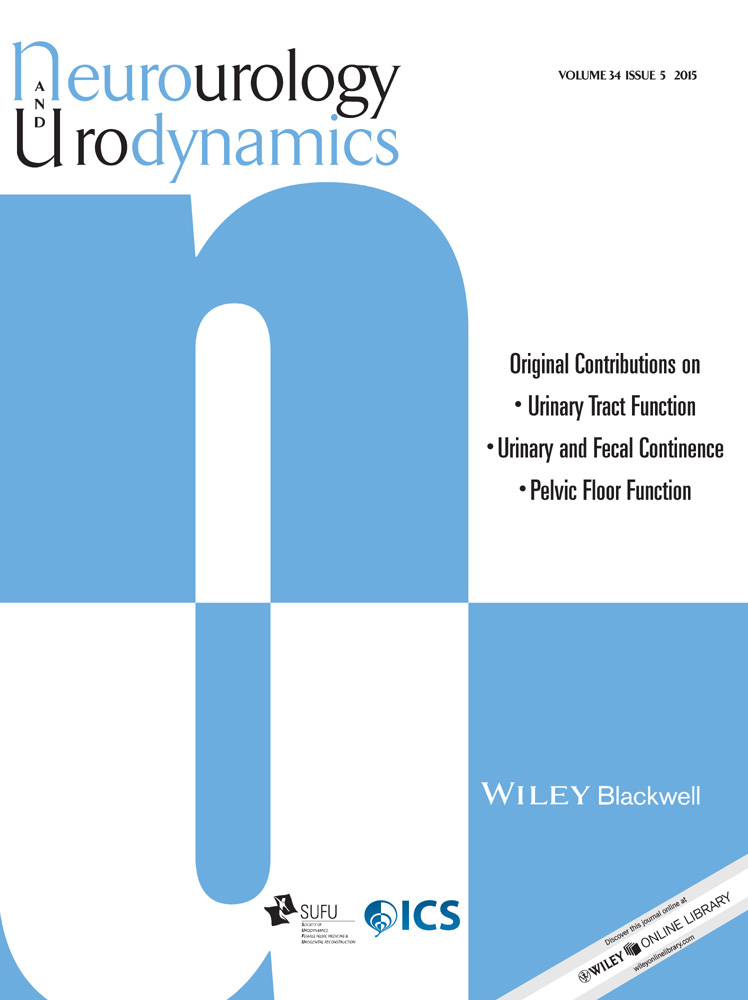Functional brain interactions during reflexive micturition are absent from spinal cord injured rats with neurogenic bladder
Abstract
Aims
The micturition reflex is initiated by urinary bladder distension triggering afferent pathways and activation of specific brain centers for controlling urine storage and release. We evaluated brain activation patterns using blood oxygenation level dependent functional magnetic resonance imaging (fMRI) during reflexive micturition in normal and spinal cord injury (SCI) rats.
Methods
Sprague-Dawley female rats, either intact or with complete spinal cord transection, were anesthetized with urethane for simultaneous isovolumetric cystometry (CMG) and fMRI evaluations. A 9.4-Tesla MRI system with a 4-elements receiver array and a quadrature volume transmit coil was used to maximize the sensitivity detection. Gradient echo-planar imaging (EPI) was used to evaluate brain activation during CMG compared to the empty bladder condition. Group analysis was conducted with a cluster threshold of Z > 2.5 and significance threshold of P = 0.05.
Results
The amplitude of bladder contractions was 10-fold higher in control rats and inter-contractile intervals were significantly shorter in SCI rats, indicative of neurogenic overactivity. Group analysis in intact rats showed both known and novel activation patterns in hippocampus, dentate gyrus, ectorhinal cortex, thalamic nucleus, septal nucleus, primary and secondary motor cortex, primary somatosensory cortex, and the periaqueductal gray matter. SCI rats did not exceed the Z-threshold during CMG.
Conclusions
We standardized a suitable urodynamic protocol to study supraspinal activation during reflexive micturition using simultaneous CMG/fMRI with high spatial resolution. Small contractions in SCI rats may be caused by increased excitability of afferent pathways without brain activation. Our results represent the first fMRI study in SCI rats. Neurourol. Urodynam. 34:469–474, 2015. © 2014 Wiley Periodicals, Inc.




